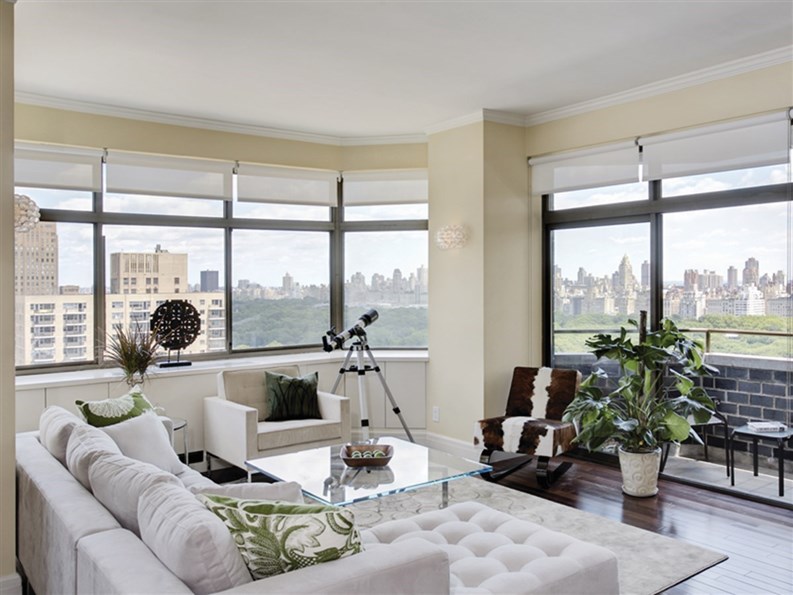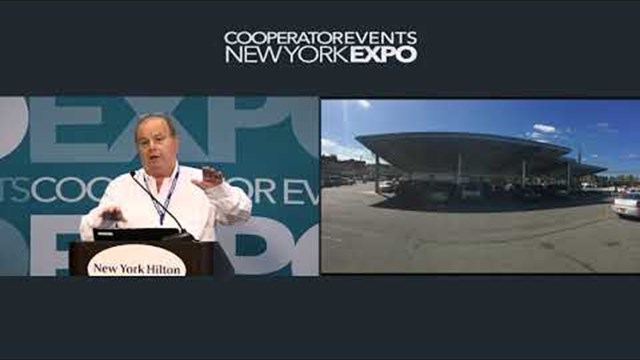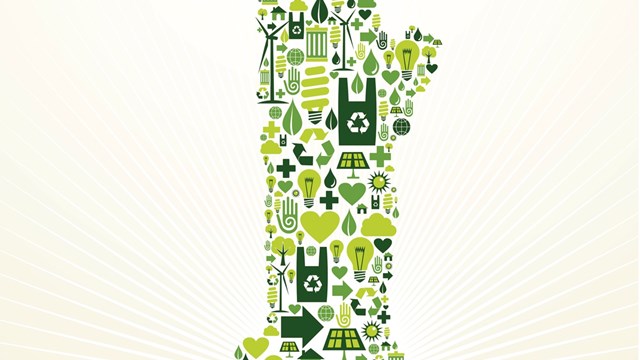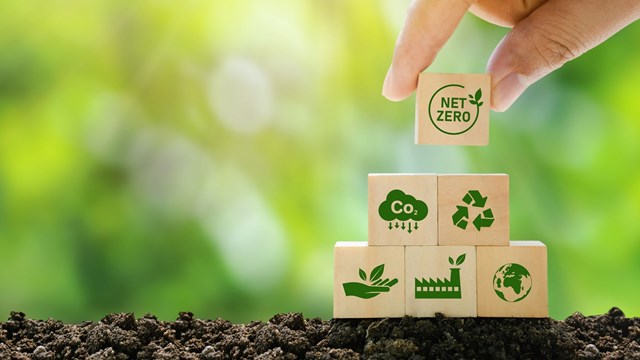Gone are the days when living green meant dwelling in a geodesic dome-house in the woods somewhere with a sofa and love seat made out of tree stumps. Today, living green doesn’t look much different than traditional interior design—even if the environment can tell the difference. Even luxury high rise buildings and urban co-op and condo owners have upgraded their living spaces with greener materials and products.
“The green movement has made everyone aware of how important it is to make responsible design decisions,” says Kati Curtis, ASID, CID, LEED AP ID&C, and the principal of Nirmada Interior Design, based in New York City. “Apartment owners are educated consumers, and they have begun to understand how remodeling decisions can affect their family’s health and well being.”
Not Just Skin-Deep
According to Neil Chambers, LEED-AP, founder/CEO of Chambers Design in New York, gone also are the days when luxury homeowners thought that the finished look was the most important part of the design. Now, he says, homeowners recognize that while aesthetics are obviously important, the most important elements of interior design go even further.
“Today, people want to make sure they are not getting toxic paints and other products that will off-gas into their living areas for the next five years,” he says. “This translates into a more focused value on indoor air quality and livability, as well as a new attention to healthier lifestyle for owners and their families. Neighbors won't suffer from headaches from that ‘new paint smell,’ which are actually toxic volatile organic compounds off-gassing into the building. Plus, if you use materials that use less energy, you are reducing the building’s carbon footprint.”
The American Society of Interior Designers (ASID) says that green design encompasses many elements of the home, such as lighting, appliances, flooring, upholstery, fixtures, furniture, wall coverings or paint, and more. By choosing green, you can save on energy costs, make your home healthier and create a more environmentally-friendly home.
“The benefits of green design are almost too numerous to mention,” says Curtis. “Some benefits include energy and cost savings, less incidents of headaches, asthma, birth defects, skin rashes, fertility problems and viruses, and perhaps improved sleeping at night knowing you’re taking care of yourself and the planet.”
What’s New
If you thought that designing a green unit or common area meant that you were limited to bamboo, think again. “The average person only thinks about bamboo, fluorescent lighting and low VOC (Volatile Organic Chemical) paint when they think of green design,” says Susan Aiello, president of Interior Design Solutions in Manhattan. “When you’re thinking of VOCs, it’s not just paint anymore. It’s any liquid that is in the house—glue, stains, etc., and there are low VOC versions now, so ask your interior designer or architect.”
There are new products on the market all the time and Chambers says that new ones such as Bananaplac are redefining what it means to be green. “Bananaplac is an alternative to hardwood and Formica made from banana fiber and non-toxic, vegetable-based resin,” he says.
Interior Design magazine is just one resource that provides updates on new green products, such as Interstyle Ceramic & Glass which is made of equal parts recycled glass and clay or Móz Designs aluminum wall panels.
Today, almost every manufacturer of appliances provides Energy Star options. Products can earn the Energy Star label by meeting the energy efficiency requirements set forth in Energy Star product specifications. Replacing inefficient appliances is one of the easiest ways you can go green in your design. “It makes it easy for us to select products that are not only beautiful and sophisticated, but also energy efficient,” says Curtis.
When it comes to flooring, Trish Riley, in her book The Complete Idiot’s Guide to Green Living, suggests that for healthy interiors choose natural wool carpets or others without toxic off-gassing.
One of the biggest misnomers about going green is that it also means spending more green. “Green doesn't have to cost more, especially in New York City,” says Chambers. “Here, you have lots of options for where to buy materials and products, unlike other parts of the country where the green market is still maturing. Here, many places are competing for your business, so you can find the best price for your design. Also, more people are using green materials and products for projects so the demand is much higher here and that helps to bring the cost of the materials down too.”
Buying new is also so gauche these days. One way of saving green is to ‘re-purpose’ the old into something new. Build it Green NYC says that construction and demolition waste accounts for around 40 percent of the waste generated in New York City, but some businesses are starting to do something about it.
For example, at salvage stores such as Build It Green NYC and Green Demolitions, consumers can purchase furniture, appliances, countertops and cabinets, among other things.
“Before the green movement, nobody was that concerned with filling dumpsters,” says Steve Feldman, owner of Green Demolitions, a company that sells luxury surplus and donated kitchens, appliances, bathroom fixtures, and home décor from houses being demolished and renovated. “After the green movement hit, nobody wanted to throw things out.”
For example, take a regular set of painted cabinets that have been in a home for a few years and been off-gassed, and instead of putting them in the landfill, they get reused,” he says.
For years, kitchen and bathroom cabinets have been made with particleboard that contained formaldehyde. The off-gassing from formaldehyde is a huge health and indoor air quality problem, but you can reduce your exposure to formaldehyde emissions by choosing formaldehyde-free, medium-density fiberboard or plywood cabinets, or the cabinets that have already gone through the off-gassing process.
Chambers says that he always looks at the salvaged goods shops when he’s designing a home. “I’m looking for something to be an incredible addition,” he says. “We have used salvaged wood to make tables, recycled concrete to make countertops and retooled old light fixtures to be modernized LED lighting. You can take cabinetry off the wall, refinish it and it looks like a million bucks at a fraction of the cost of new cabinets.”
Curtis says that salvaging items in her designs is one of her favorite ways of going green.
“Antique pieces are more unique and often better made than today’s products—and nothing is greener than re-use,” she says. “Wood floor manufactures offer reclaimed materials that are even more beautiful and durable than new, with a variety of finish options.”
Working with a Designer
Whether residents are greening their units or managers are greening common areas, it’s best to work with a designer who specializes in green design.
The ASID Foundation and the U.S. Green Building Council (USGBC) offer The REGREEN program (www.regreen program.org), which is a series of guidelines designed for use by residential designers, construction professionals and homeowners. It includes best practices, learning programs, along with print and electronic resources for those looking to green-up an existing home whether it’s room by room, or an entire house.
“You also want someone who is LEED accredited to look at your space and see how they can make the lighting more efficient or calculate the savings when you do,” says Aiello. LEED, which stands for Leadership in Energy and Environmental Design, is an internationally-recognized green building certification system that also provides green design certification for interior professionals.
“My job is to be an educator and help guide clients through the process and set priorities,” says Curtis. “Often customers don’t really understand, but when we begin to discuss issues around lead paint, formaldehyde in cabinets, VOCs, where the wood in their furniture comes from, chemicals in textile dyes, and the health dangers of PVC, it becomes relevant. We also work with boards to analyze their energy savings, and maintenance costs, while achieving a beautiful design aesthetic appropriate to the building.”
In the end, Curtis says the home shouldn't look ‘green.’ “It should look like a home and become a space that you love and want to spend time and where you feel the safest and most comfortable,” says Chambers. “That's really the goal of green.” n
Lisa Iannucci is a freelance writer and a frequent contributor to The Cooperator.










Comments
Leave a Comment